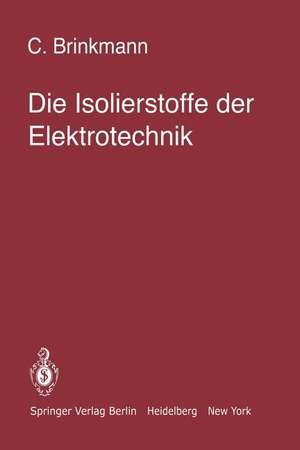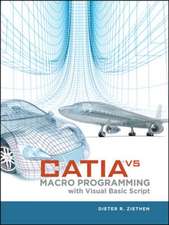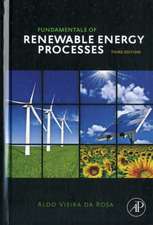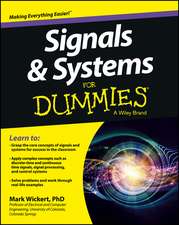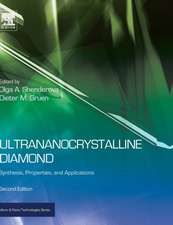Die Isolierstoffe der Elektrotechnik
Autor C. Brinkmannde Limba Germană Paperback – 26 dec 2011
Preț: 463.19 lei
Nou
Puncte Express: 695
Preț estimativ în valută:
88.65€ • 92.20$ • 74.29£
88.65€ • 92.20$ • 74.29£
Carte tipărită la comandă
Livrare economică 14-28 martie
Preluare comenzi: 021 569.72.76
Specificații
ISBN-13: 9783642809231
ISBN-10: 3642809235
Pagini: 448
Ilustrații: VIII, 437 S.
Dimensiuni: 155 x 235 x 24 mm
Greutate: 0.62 kg
Ediția:Softcover reprint of the original 1st ed. 1975
Editura: Springer Berlin, Heidelberg
Colecția Springer
Locul publicării:Berlin, Heidelberg, Germany
ISBN-10: 3642809235
Pagini: 448
Ilustrații: VIII, 437 S.
Dimensiuni: 155 x 235 x 24 mm
Greutate: 0.62 kg
Ediția:Softcover reprint of the original 1st ed. 1975
Editura: Springer Berlin, Heidelberg
Colecția Springer
Locul publicării:Berlin, Heidelberg, Germany
Public țintă
ResearchCuprins
und Übersicht.- A. Grundlagen.- 1 Aufbau der Isolierstoffe.- 1.1 Atomare Grundlagen.- 1.2 Chemische Bindung und Molekülbildung.- 1.3 Aggregatzustand.- 1.4 Kristalle und amorphe Stoffe.- 1.5 Aufbau der Makromoleküle.- 2 Werkstoffeigenschaften.- 2.1 Mechanisches Verhalten.- 2.2 Elektrisches Verhalten.- 2.3 Verhalten in der Wärme.- 2.4 Verhalten gegen chemische und andere Einflüsse.- 3 Zuschlagstoffe und ihr Einfluß auf die Werkstoffeigenschaften.- 3.1 Stabilisatoren.- 3.2 Weichmacher, Gleit- und Trennmittel.- 3.3 Füllstoffe.- 3.3.1 Verstärkende Füllstoffe.- 3.3.2 Sonstige aktive Füllstoffe.- 3.3.3 Inaktive Füllstoffe.- B. Die Isolierstoffe.- 4 Natürliche anorganische Isolierstoffe.- 4.1 Gase.- 4.1.1 Luft.- 4.1.2 Stickstoff.- 4.1.3 Kohlendioxid (Kohlensäure).- 4.1.4 Wasserstoff.- 4.1.5 Edelgase.- 4.2 Naturgesteine.- 4.2.1 Marmor.- 4.2.2 Schiefer.- 4.3 Quarz.- 4.4 Asbest.- 4.5 Glimmer.- 5 Künstlich hergestellte anorganische Isolierstoffe.- 5.1 Gasförmige Halogenverbindungen.- 5.1.1 Schwefelhexafluorid.- 5.1.2 Bromwasserstoff.- 5.2 Glas.- 5.2.1 Vollglas.- 5.2.2 Glasfaser.- 5.3 Keramische Isolierstoffe.- 5.4 Metalloxide nichtkeramischer Fertigungstechnik.- 5.4.1 Aluminiumoxid.- 5.4.2 Tantalpentoxid.- 6 Natürliche organische Isolierstoffe.- 6.1 Mineralöl.- 6.2 Sonstige Erdölerzeugnisse und Asphalt.- 6.2.1 Vaseline.- 6.2.2 Paraffin.- 6.2.3 Bitumen.- 6.2.4 Asphalt.- 6.3 Pflanzenöle.- 6.3.1 Leinöl.- 6.3.2 Holzöl.- 6.3.3 Sojaöl.- 6.3.4 Rizinusöl.- 6.3.5 Terpentinöl.- 6.3.6 Einsatzgebiete der Pflanzenöle.- 6.4 Wachse.- 6.4.1 Karnaubawachs.- 6.4.2 Kandellilawachs.- 6.4.3 Chinesisches Insektenwachs.- 6.4.4 Bienenwachs.- 6.4.5 Walrat.- 6.4.6 Montanwachs.- 6.4.7 Ozokerit.- 6.4.8 Einsatzgebiete der Wachse.- 6.5 Naturharze.- 6.5.1 Kolophonium.- 6.5.2 Kopal.- 6.5.3 Bernstein.- 6.5.4 Schellack.- 6.6 Holz.- 6.7 Faserstoffe.- 6.7.1 Seide.- 6.7.2 Leinen.- 6.7.3 Jute.- 6.7.4 Hanf.- 6.7.5 Ramie.- 6.7.6 Baumwolle.- 6.8 Papier.- 7 Substituierte Kohlenwasserstoffe.- 7.1 Fluorierte und chlorierte Kohlenstoff Verbindungen.- 7.2 Chlorierte Diphenyle.- 8 Halogenfreie synthetische Öle.- 8.1 Polyisobutylen.- 8.2 Silikonöl.- 9 Thermoplastische Isolierstoffe.- 9.1 Zellulosehydrat.- 9.2 Zellulosenitrat.- 9.3 Zelluloseazetat, Zellulosepropionat und Zelluloseazetobutyrat.- 9.4 Zelluloseäther.- 9.5 Polyäthylen.- 9.6 Äthylenvinylazetat-Mischpolymerisat.- 9.7 Polypropylen.- 9.8 Polybuten.- 9.9 Polymethylpenten.- 9.10 Polystyrol und Styrolmischpolymerisate.- 9.11 Polyvinylchlorid.- 9.12 Polyvinylidenchlorid.- 9.13 Polyvinyläther.- 9.14 Polyvinylkarbazol.- 9.15 Polytetrafluoräthylen.- 9.16 Tetrafluoräthylenhexafluorpropylen-Mischpolymerisat.- 9.17 Polychlortrifluoräthylen.- 9.18 Äthylentetrafluoräthylen-Mischpolymerisat.- 9.19 Perfluoralkoxy.- 9.20 Polyphenylensulfid.- 9.21 Polyazetal.- 9.22 Polymethakrylsäureester.- 9.23 Polyamid.- 9.24 Polyäthylenterephthalat.- 9.25 Polybutylenterephthalat.- 9.26 Polykarbonat.- 9.27 Polybenzoxazindion.- 9.28 Polyphenylenoxid.- 9.29 Polysulfon.- 9.30 Polyimid.- 9.31 Polyesterimid und Polyamidimid.- 9.32 Polyhydantoin.- 9.33 Phenoxyharz.- 10 Gehärtete Kunststoffe (Duromere).- 10.1 Polyesterharz.- 10.2 Diallylphthalatharz.- 10.3 Cyanatharz.- 10.4 Alkydharz.- 10.5 Phenolharz.- 10.6 Melaminharz.- 10.7 Harnstoffharz.- 10.8 Silikonharz.- 10.9 Polyimid.- 10.10 Polyurethan.- 10.11 Epoxidharz.- 11 Elastomere.- 11.1 Naturkautschuk und Naturgummi.- 11.2 Derivate des Naturkautschuks.- 11.3 Polyisopren.- 11.4 Polyisobutylen.- 11.5 Butylgummi.- 11.6 Styrolbutadiengummi.- 11.7 Chloroprengummi.- 11.8 Äthylenpropylen-Mischpolymerisat bzw. -Terpolymerisat.- 11.9 Äthylenvinylazetat-Mischpolymerisat.- 11.10 Chloriertes und chlorsulfoniertes Polyäthylen.- 11.11 Silikongummi.- 11.12 Polyurethan.- Schrifttum.
